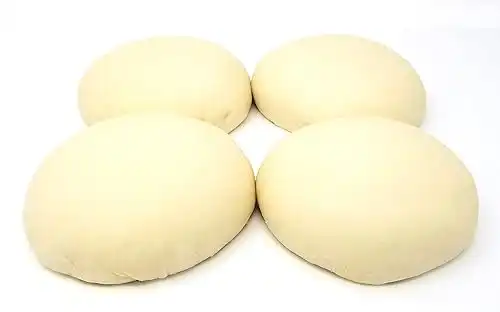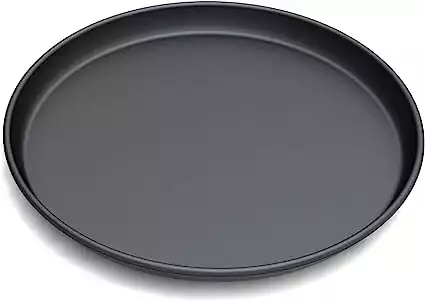Ever wondered what the secret is to achieving that satisfying crunch in each bite, coupled with the perfect chewy texture?
It’s all about hydration!
In this post, we delve deep into the art and science of pizza making, sharing the key tips and tricks that make all the difference. We’ll reveal how a simple adjustment to your dough recipe could transform your homemade pizza experience, providing that sought-after crispy crust.
So, buckle up and keep reading – your journey toward mastering the ultimate crispy pizza crust starts here!
So, let’s get started!
Here’s What You Will Find:
Key Takeaways
How to Make a Crispy Pizza Crust
A crispy crust is achieved by a balance of fermentation time, hydration, temperature, and yeast amount.
The secret to a crispy pizza crust is to add more water to the dough recipe; use a high-hydration dough.
The perfect hydration for a thin-crust pizza is 70 to 75%.
What is Crispy Pizza?
“Crispy pizza” typically refers to a style of pizza where the crust is baked to the point of having a distinct crunch, while still maintaining a slightly chewy texture in the interior. This term can apply to a variety of pizza styles, including thin crust pizzas like New York-style or Roman-style, or even to certain styles of pan pizza where the edges and bottom of the crust get particularly crispy, like Detroit-style pizza.
The key to a crispy pizza lies in the dough preparation, baking technique, and often the type of oven used. A properly made crispy pizza crust will offer a satisfying crunch when bitten into, providing a delightful contrast to the soft and melty cheese and toppings.
The crust should be thin and crispy, with a nice golden brown color. The edges or “cornicione” should be crispy and light, while the center should be soft and chewy. The dough and the cooking technique are key to achieving this perfect crust.
The dough should have the right balance of hydration and fermentation and be cooked at the right temperature for the perfect amount of time. If you are looking for a pizza with a perfect crust that crunches with every bite, then crispy pizza is the one for you!
How to Make a Pizza Crust Crispy?
Creating a crispy pizza crust involves a subtle balance of ingredients and techniques, one of which is adjusting the hydration level of your dough. Simply put, to achieve a more crispy crust, you should consider adding more water to your dough recipe. This increase in hydration encourages the formation of steam during baking, which expands the dough, creating a light, airy, and ultimately crisper crust. Remember, the correct balance of hydration and high-heat baking is key to achieving that perfect, crispy bite.
In general, if your dough recipe is anywhere from 70% to 80%, you should be able to get a crispy crust. Some exceptions exist, but they are related to specific pizza styles that contain additional ingredients.
To calculate how much water you need, weigh the flour and multiply it by your desired hydration (anywhere from .70 to .80), and the result is your water content for a crispy pizza crust.
Use our hydration calculator if you don’t want to do the math.
Here is a thin crust pizza recipe using active dry yeast at 72% hydration. This thin crust pizza dough recipe is ready to bake in just 15 minutes with deliciously crisp results.
Why is a Crispy Crust Important for a Good Pizza?
First, a crispy crust adds a great textural contrast to the soft and chewy center of the pizza. The crunchy texture of the crust provides a satisfying contrast to the soft and gooey toppings and mozzarella cheese.
Second, a crispy crust helps to hold the toppings and cheese in place, preventing them from sliding off the pizza while you are eating it. This makes the pizza easier to eat and more enjoyable.
Third, a crispy crust provides a nice contrast in temperature. A crispy crust is usually cooked at a higher temperature which makes it hotter than the toppings and cheese, providing a nice contrast in temperature that adds to the overall enjoyment of the pizza.
Finally, a crispy crust is a sign of a well-made pizza. A crispy crust indicates that the dough has been properly prepared and baked, which indicates that the rest of the pizza will also be of high quality.
Science of a Crispy Pizza Crust
Just as every Pitmaster knows cooking science for making BBQ meats, you also need to know a few things about preparing and cooking homemade pizza dough.
This section will help you follow the science in a rational sense. After that, you’ll better understand why pizza dough cooks the way it does.
Dough hydration and fermentation are important factors in creating a crispy crust for pizza.
Dough Hydration
Dough hydration refers to the amount of water in the dough, which can affect the crust’s texture. If the dough has too much water, the crust will be soft and chewy, while if the dough has too little water, the crust will be hard and brittle.
To achieve a crispy crust, the dough should have the right amount of water, usually around 60-75%. This will create a high-hydration dough that is easy to work with and shapes well and a crispy and golden brown crust when cooked. You can always adjust the dough’s hydration to see what works best for you.
Check out our online pizza dough hydration calculator to find the hydration percentage of your recipe.
Fermentation
Fermentation is the process by which yeast and bacteria consume sugars in the dough, producing carbon dioxide and alcohol. This process gives the dough flavor, structure, and texture.
You can refrigerate it for a minimum of 12 hours or up to 72 hours. It’ll rise slowly as it chills, developing flavor; this long rise will also add flexibility to your schedule.
When the dough is fermented for a longer period of time, the yeast and bacteria produce more acidity and alcohol, which helps to create a crispy crust by adding structure and promoting the Maillard reaction.
Maillard Reaction
The Maillard reaction is a chemical reaction between amino acids and reducing sugars that creates flavor and color in food. This reaction is responsible for the browning of food when it is cooked, and it occurs at high temperatures, typically above 280°F (138°C).
In the case of pizza, the Maillard reaction is responsible for the browning and crispiness of the crust. The dough, which contains amino acids and reducing sugars, is exposed to high heat when cooked.
As the temperature increases, the Maillard reaction creates new flavor compounds and color changes. This reaction will make the pizza’s crust golden brown and crispy.
It’s important to note that the Maillard reaction is also influenced by other factors such as pH, enzymes, and moisture. For example, a drier environment promotes the Maillard reaction, while a more humid environment can inhibit it.
Ingredients
- Water
The first and most crucial ingredient to make a crispy crust is water. Every pizza dough recipe has a varied hydration level based on the wheat flour volume and the amount of water added.
The average pizza dough hydration is 65%; for a crispier crust, you need to go higher, which is 70 to 75% hydration.
For more details on dough hydration, check our articles on pizza dough hydration and 7 Hydration Percentages that Make the Best Pizza.
- Yeast
The addition of yeast reacts with sugar and water, causing your dough to rise through a proofing process. You can use either active dry yeast or instant yeast. The longer the rise time, the stronger the flavor.
In effect, you’re making great dough that will produce a form of bread with very different textures through the gluten formed.
- Oil
Adding oil also helps form a protective layer in your dough to keep pizza sauce and pizza toppings from seeping into the dough.
Without this thin layer, your dough may be soggier from liquids that get into your crust. Learn more about oil in pizza dough in our article Here’s Everything You Need to Know About Oil in Pizza Dough.
Other Considerations
You must be careful about how much hydration and oil content you add because you want good pliability when forming your pizza dough.
Temperature
Temperature is important because it determines how quickly the crust will cook. A high temperature will cook the crust quickly, creating a crispy texture, while a low temperature will cook the crust slowly, resulting in a softer texture.
The ideal temperature for cooking a pizza crust is around 425-450°F (218-232°C); this will create a crust that is crispy on the outside and soft and chewy on the inside.
Every kitchen will have an oven that may not be suitable for cooking pizza since the average temperature of commercial ovens rarely exceeds 550 degrees Fahrenheit.
Traditional pizza ovens are much better since they can reach temperatures of 750-800 degrees. The cooking time is shorter, and the result is a crispier crust.
But that doesn’t mean you can’t get good results with lower oven temperatures, so the temperature isn’t the only issue here. The surface of where your pizza is placed will immediately affect how the dough is cooked.
They are prepared or coated with oil beforehand, allowing the dough to fry the surface, cooking the dough faster.
Another technique that can be used to create a crispy crust is to use a hotter oven, such as a wood-fired or a gas-fired pizza oven. A great alternative for home cooks is an Ooni pizza oven.
These ovens can reach temperatures of 800-900°F (426-482°C) and are designed specifically for cooking pizzas. This high-heat cooking method allows the crust to cook quickly and achieve a crispy texture. We have the Ooni Koda 16, which is great!
Cooking Surface
The baking technique also plays a significant role in creating a crispy crust. The pizza should be cooked on a preheated surface, such as a pizza stone, to ensure that the crust cooks evenly.
The pizza should be placed on the stone in the oven and then cooked for around 8-12 minutes, depending on the size of the pizza and the desired level of crispiness.
One saving grace of every home-based pizza chef will prefer using a pizza stone. They store heat in a way that helps pizza dough cook faster and more evenly than a wood-fired pizza oven. There is also another innovation called pizza steel which is essentially a steel slab.
It works the same way as a pizza stone, and stores heat more effectively than a stone since steel retains heat through thermal conductivity.
However, deep dish pizzas will use a round pizza pan made from griddle iron-style pans without handles.
Depending on your pizza, you need one or more of these cooking surfaces; a standard baking surface is a baking sheet or an iron skillet.
In our article Insanely Powerful Pizza Baking Surfaces, you can find a baking surface list that will Give You the Best Crust.
Are You Having Trouble Making Pizza Doughballs?
Here’s What You Can Do
We love that you can now buy fresh pizza dough balls straight from New York City. The perfect size for a medium pizza. They will ship frozen, just thaw and make the most wonderful pizza in minutes.
New York Pizza is different. The crust is completely unique. Airy, Crispy, and a taste that can’t be duplicated. Dairy-Free - Soy Free. Pizza Dough is made fresh and frozen only for transportation. All-Natural ingredients - Flour, Water, Olive Oil, Salt, Sugar and Yeast
Price includes Express Shipping. 1 Doughball creates a 12 to 14-inch pie depending on how thick you like the crust.
Complete instructions with each order. Taste the difference New York Water makes!
Cooking Time
What the cooking time means to pizza is as essential as the proofing time of your dough.
For this reason, this is why the temperature and cooking surfaces you decide to use will produce various results in your quest to make crispy pizza crusts. Shorter cooking times often mean that you have a hotter oven.
While lower temperatures better have a cooking surface that retains preheat levels, you aren’t cooking a pizza for longer than 15-20 minutes.
Ideally, the average bake time should be 10-15 minutes. Hotter ovens can take as little as 6-10 minutes if the conditions are right.
Pro Tip
For best results, pre-heat your pizza stone or your pizza steel for about 45 min. to 1 hr before baking your pizza. The heat retained in the baking surface will produce the crispiest crust.
What is the Secret to a Crispy Pizza Crust?
The secret to a crispy pizza crust is to use high-hydration dough!
Pizza dough recipes that have higher amounts of water sound like they’ll be bad for any pizza. However, Higher hydration doughs result in crispier crusts.
Adding more water to your recipe allows the dough to be hydrated, expanding rapidly once it comes in contact with the oven’s heat.
The additional water adds weight to the dough, and it will evaporate immediately, creating steam that will be trapped underneath the crust of the pizza, making a crispier texture.
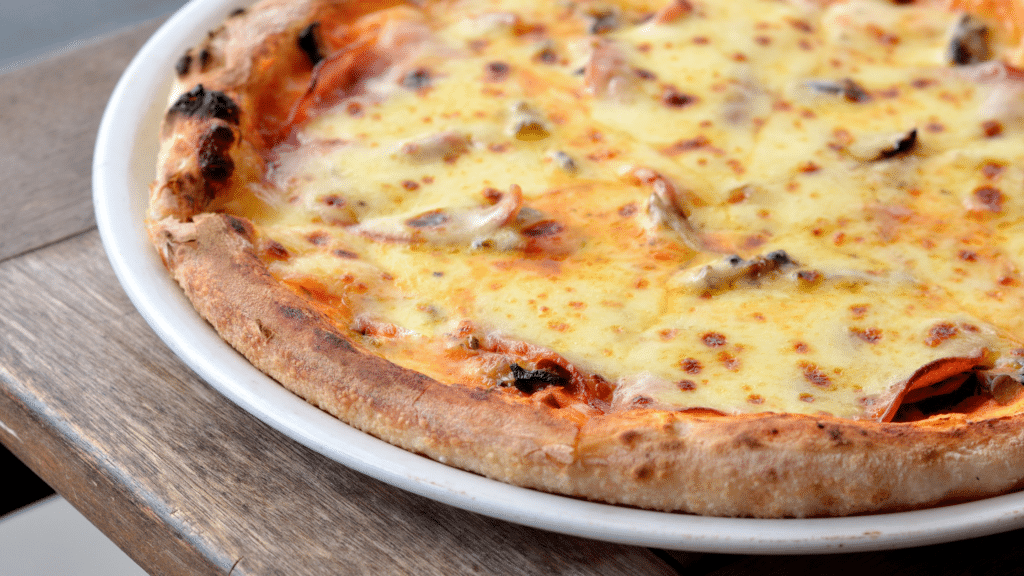
Thin Crust Pizza Recipe
Ingredients:
- 4 cups (500g) bread flour or pizza flour
- 1 tsp (7g) active dry yeast (1 packet)
- 2 tsp (10g) salt
- 2 tbsp (30ml) olive oil
- 1 1/2 cups (360ml) warm water
- 1/2 cup pizza sauce, such as classic red sauce or a white sauce
Instructions:
- Mix flour, yeast, and salt in a large bowl with a stand mixer or wooden spoon.
- Add the olive oil and warm water, and mix until the dough comes together.
- Knead the dough for about 8-10 minutes until it becomes smooth and elastic.
- Place the dough in a greased bowl and cover it with a kitchen towel. Let the dough rise in a warm place for about 1 hour or until doubled in size. For maximum flavor, let the dough rest overnight in the refrigerator.
- Preheat the oven to 425°F (218°C). Place a pizza stone or a baking sheet in the oven to preheat.
- Once the dough has risen, punch it down and divide it into 2-3 pieces. Place it on a lightly floured surface.
- Roll out each piece of dough with a rolling pin into a thin circle, about 1/4 inch (0.6 cm) thick.
- Spread the tomato sauce into a thin layer and add your desired toppings to the raw dough.
- Carefully transfer the dough to the preheated stone or baking sheet and bake for 8-15 minutes, until the crust is golden brown and crispy or until the cheese is melted and the toppings are hot.
- Once the pizza is done, remove it from the oven and let it cool for a few minutes before slicing and serving.
Note: The fermentation time can be adjusted to your liking; a longer fermentation time will give more flavor and complexity to the crust.
For a thick crust, adjust the thickness of the pizza dough to 1/2. We prefer active dry yeast, but you can also use instant yeast. Also, note the small amount of salt. There are two reasons for that. First, salt may kill the yeast, and we always try to control the salt intake.
With this recipe, you should be able to make the best crispy pizza; the dough should have a nice balance of hydration, the fermentation process will give the crust structure and flavor, and the high temperature will promote the Maillard reaction giving the crust a nice golden brown and crispy texture.
Cook the Pizza at a Very High Temperature
If you don’t have a pizza oven up to 800 degrees Fahrenheit, you can always buy pizza steel or pizza stone.
This is better than having an oven that isn’t giving you enough heat to work with. Any pizza stone or metal can retain heat and cook your pizza in less time.
This won’t be so much of an issue if you have an oven that can reach higher temperatures. The advantage of ovens with higher output is getting a pizza that will be crunchier.
But adding any pizza stone or pizza steel will always have an immediate benefit.
What Other Ingredient Makes Crispy Pizza Crust?
Many factors make any pizza crust a lot crispier, which all have to do with temperature and the surface you bake on.
But olive oil on the outer edge is one item you can add to the outside pizza dough.
This will cause the dough to crisp faster due to the oil frying effect.
This is also done for deep dish-style pizzas where a baking pan is brushed with oil or butter to get a crispy outer texture.
Experimenting with food shortening is another way to get crunchy results and often makes a tastier crust than others that use oil. Having higher concentrations of water will also make your dough crisp up faster.
Does Olive Oil Make Crispy Pizza Crust?
The answer to this question is yes and no, depending on how you add olive oil to your dough. Adding olive oil to pizza dough can indeed influence the crispiness if the conditions and temperature are right.
Just like any artisan pizza requires adequate heat that helps cook the dough quickly, adding olive oil speeds this up.
On the other hand, if you don’t grasp how much oil you’re adding, the results can be less than satisfying. Try to avoid cooking spray with olive oil, which isn’t going to be very healthy.
You want to choose olive oil that is high quality, so it will influence the flavors over trying to make your crispy pizza crust in the process.
Pizza Pun
I’m not old. I woke up, I lifted my arms, I moved my knees, I turned my neck. Everything made the same noise:
Crraacckk!
So I’ve come to the conclusion that I’m not old, I’m crispy!
Tips on How to Make Crispy Pizza
You might want to know some great tips we recommend to create a thin crust pizza.
Layer the Crust
The first is layering butter between your dough when you start to shape it by folding it a couple of times before rolling it out. This creates a crispy pastry-like texture that gives a tasty buttery crunch.
Substitute the Oil
The second recommendation is using Crisco food shortening instead of oil which turns ordinary pizza dough into a delightful sweeter thin crust.
Alternatively, add melted butter to your dough mixture instead of oil. This will make a crust that will get crispy and brown as it bakes.
How to Make Crispy Pizza on a Pizza Stone
There is a big question about whether you should preheat your pizza stone beforehand, and the answer is an absolute yes!
But one tip is to add cornmeal onto the top of the stone beforehand to get a surface that lets the dough slide easier.
Since the pizza stone will retain heat, you need to heat the stone to a higher temperature than when you cook your pizza.
The cornmeal will stick to your pizza bottom and won’t get stuck to the baking stone. As this stone helps make your crispy pizza
The cornmeal will stick to your pizza bottom and won’t get stuck to the baking stone. As this stone helps make your crispy pizza crust, the outer edges of your dough will also cook more rapidly.
Don’t forget that a preheated stone does need to be placed on a lower or middle rack, so this is where it will become preheated.
Here is Our Favorite Pizza Stone
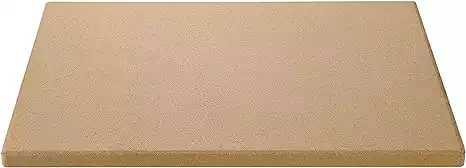 Unicook Heavy Duty Pizza Grilling Stone
Unicook Heavy Duty Pizza Grilling Stone
Unleash the hidden chef in you with the Unicook Heavy Duty Pizza Grilling Stone. This exceptional tool, crafted from durable cordierite material, promises to transform your homemade pizzas into culinary masterpieces. Its thermal shock resistance ensures that it can withstand extreme temperatures, from the high heat of your oven or grill to the cool countertop post-baking.
Heat resistant up to 1,450°F (787°C).
The Unicook Pizza Stone evenly distributes heat for a consistently crisp and beautifully browned crust every time, while its porous surface absorbs excess moisture, bidding goodbye to the dreaded soggy crust. Its considerable size makes it perfect for baking family-sized pizzas, bread, biscuits, and more. Step into a world of unmatched flavor and crispness with the Unicook Heavy Duty Pizza Grilling Stone—your gateway to a home pizzeria experience.
Learn more about pizza stones in this article; if you have a question that is not covered in our article, let us know, and we will gladly get you an answer.
Pizza Stones FAQs: 15 Burning Questions That You Need to Know the Answer
Know the answer to 15 pizza stones FAQs that you should know. You asked, and we answer your concerns about pizza stones and more.
How to Make Crispy Pizza on a Pizza Steel
Since pizza steel will store heat more effectively, this is how you can get a very crispy pizza crust. Steel also gets hotter for extended periods than pizza stones, and the advantage is that it won’t crack as a stone would.
A baking stone will react to cool air if the temperature difference hits it suddenly, so pizza steel is considered better.
Here’s What the PROs at Homemade PIzza Pro Use and Recommend
The Original Baking Steel is your secret weapon for recreating pizzeria-quality pizzas right in your home kitchen. Crafted from ultra-conductive steel, this game-changing tool captures and radiates heat with remarkable efficiency, ensuring a perfectly crisp, evenly baked crust every time.
It's not just for pizzas; use it for baking breads, roasting veggies, or even searing meats to culinary perfection. Durable, versatile, and easy to use, the Baking Steel is a true champion of home cooking that will elevate your baking game to professional heights.
Say goodbye to soggy, undercooked crusts and hello to the tantalizing taste of impeccably baked goods with The Original Baking Steel!
How to Make Crispy Pizza in the Microwave
This is always debated since it’s hit or miss at getting anything crispy inside a microwave. One suggestion is to have a microwave with a convection setting that can circulate hot air while cooking your pizza.
If you don’t have this type of microwave, you can consider using a crisper pizza pan for your order online.
We highly recommend that you look into purchasing a microwave with a convection heater to get crispier results. Cooking dough inside a standard oven will have too much moisture that won’t allow your crust to get crispy.
This is about as good as it gets if you’re reheating pizza slices in a crisper bag.
Here is a Microwave Crisper Pan You Can Try
Cooks like a Fry Pan: The pan absorbs the microwaves and cooks food from the hot pan bottom, to make this cookware like a Fry Pan and Grill plate
How to Get a Crispy Pizza Crust Without a Pizza Stone
This might sound a bit unorthodox, but it works to make a great crispy pizza crust. You’ll need a large cast-iron griddle or cast-iron pan and flip it over so the bottom creates the perfect support for your pizza.
You might want to scrub the bottom if you use this for frying and remove any oil on the sides or bottom of the griddle.
Add plenty of cornmeal so your pizza doesn’t stick to this. Add your cornmeal and preheat the griddle to 550F for 10 minutes.
Then lower the temperature to the temperature you usually cook your pizza at. The stored heat in the iron will act like a pizza stone or pizza steel, making your pizza crispy and crunchy.
The Lodge Pro-Grid Iron Grill & Griddle provides excellent heat retention and distribution and fits over two stovetop burners. Two easy-grip handles allow for easy lifting, flipping, or hanging when not in use. You can use this grill to cook pancakes and eggs or grill chicken and steak.
How Do You Make the Crust of a Frozen Pizza Crispy?
Frozen pizza will be tricky since it is going to hold more moisture while it starts to defrost. This is why they come with a cardboard circle to support the pizza.
You can add a couple of paper towels underneath the pizza to soak up excess melting ice crystals while it defrosts. Just don’t forget to remove the paper towel before baking.
Another method is to place your frozen pizza onto a preheated pizza stone or pizza steel right away, which will immediately start to cook the pizza.
Pizza stones also absorb moisture since they’re porous, so any moisture on the bottom of a frozen pizza is instantly vaporized. Either way, any preheated stone or steel is recommended.

Soggy Pizza Crust Remedy
To avoid getting a soggy crust, you need to have the dough stretched out thin enough to have overly thicker crust dough sections.
You can also poke a few holes in the bottom to keep the dough from bubbling up in the middle as it cooks. But the reality of soggy pizza is something you didn’t think was the real culprit.
Adding too many toppings will prevent your dough from getting crispy since these will keep the oven’s heat from doing its job.
This will be more obvious if you add fresh veggies, mushrooms, and other items that introduce moisture into the oven.
Even too much cheese or pizza sauce acts like a heat-absorbing layer that can make your crust soggy as it cooks.
The Last Slice
Making a crispy pizza is all about combining ingredients and techniques. This best recipe uses active dry yeast, which helps to create a flavorful and well-structured crust.
The dough is hydrated to the right amount and fermented for a perfect balance of flavor and structure. The high temperature in the oven promotes the Maillard reaction, resulting in a golden brown and crispy crust.
With this recipe and the recommended tips, you can make a delicious and crispy crust pizza in your own kitchen. Enjoy!
Additional Resources on Pizza Dough

How to Mix Pizza Dough
the PROs
Do you want to learn how to mix pizza dough? Pizza dough is a staple in most households, but it …

Best Water for Pizza Dough: Temperature, Quality, and Hydration
the PROs
In this article, we are going to dive deep into the mysterious ways of water. In conjunction with flour, yeast, and salt, it can make the most spectacular pizza dough.

Salt in Pizza Dough: The Secret to a Perfectly Seasoned Crust
the PROs
Making homemade pizza is not complicated; see how with just a few ingredients like flour, water, yeast, and salt you can do wonders. In this article, we will discuss the role of salt in homemade pizza and discover four (4) basic rules applicable to salt, that are easy to remember that will make you a better homemade pizza baker.
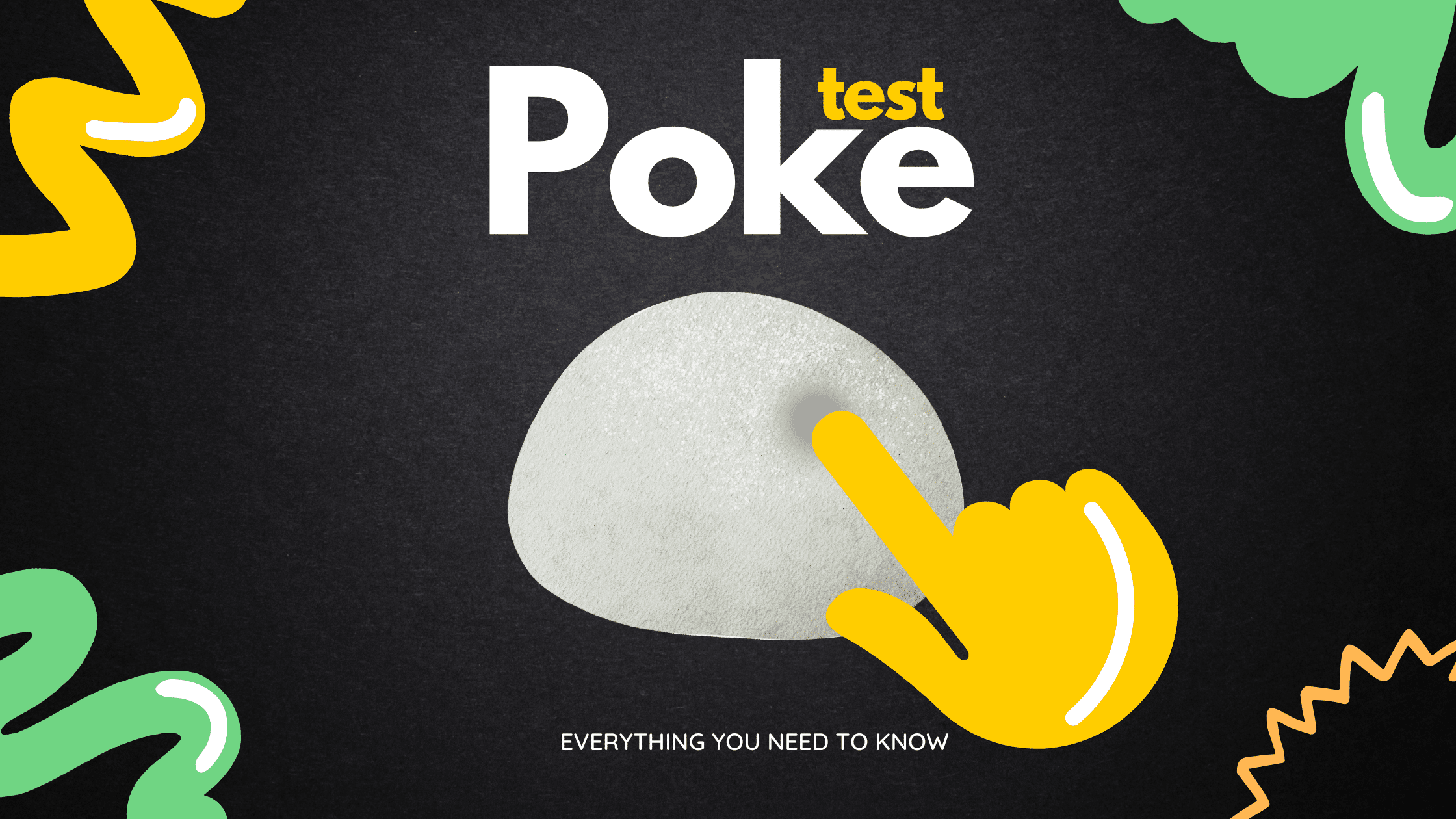
Poke Test Demystified: Master the Technique for Perfect Pizza Every Time
the PROs
Are you tired of ending up with a pizza crust that’s either too thick or still raw in some parts, …
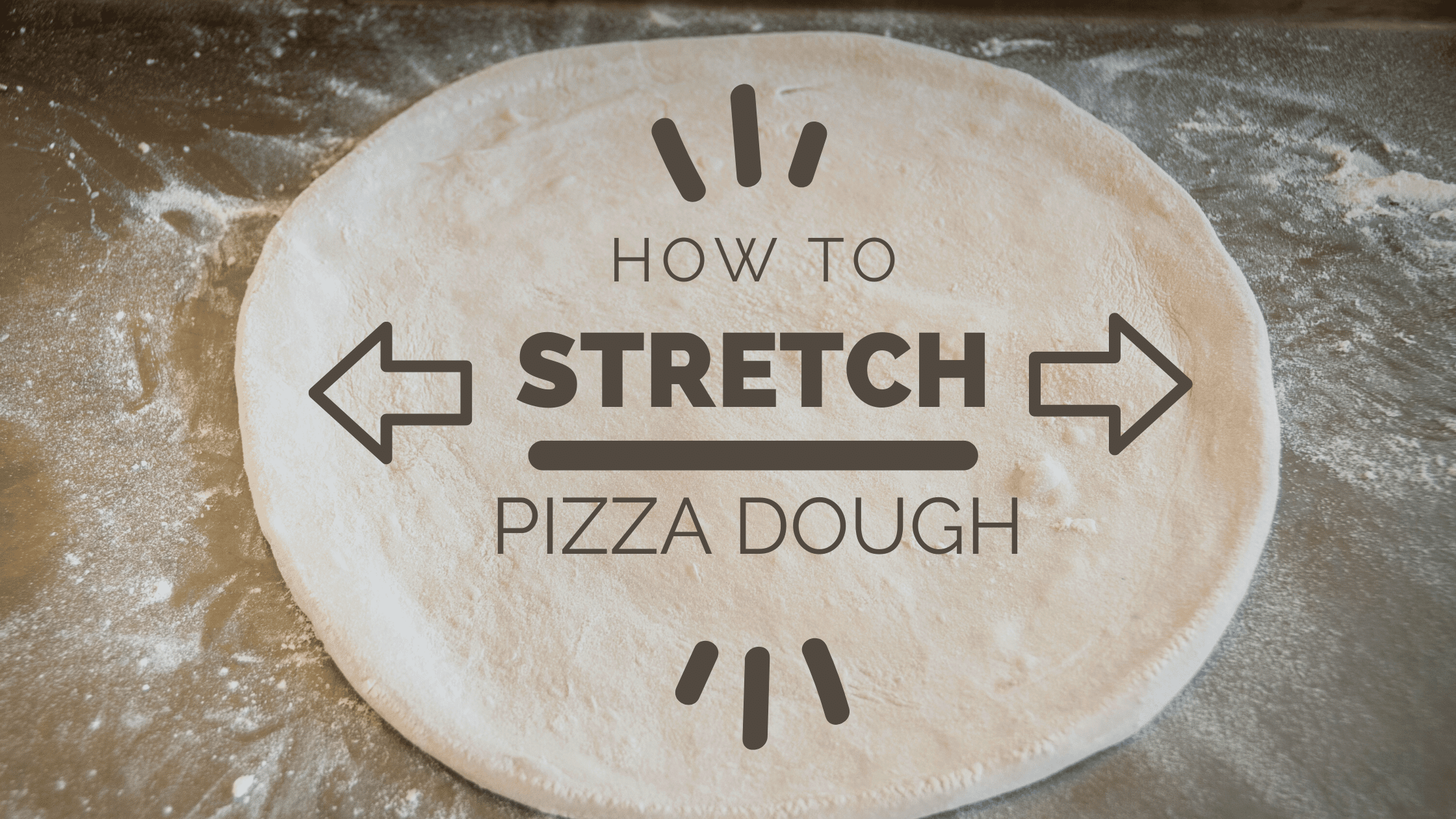
How to Stretch Pizza Dough Like a PRO: Tips and Tricks to Elevate Your Homemade Pizza Game!
the PROs
So you’ve decided to make your pizza but are unsure how to stretch pizza dough to perfection. Well, fear not! …
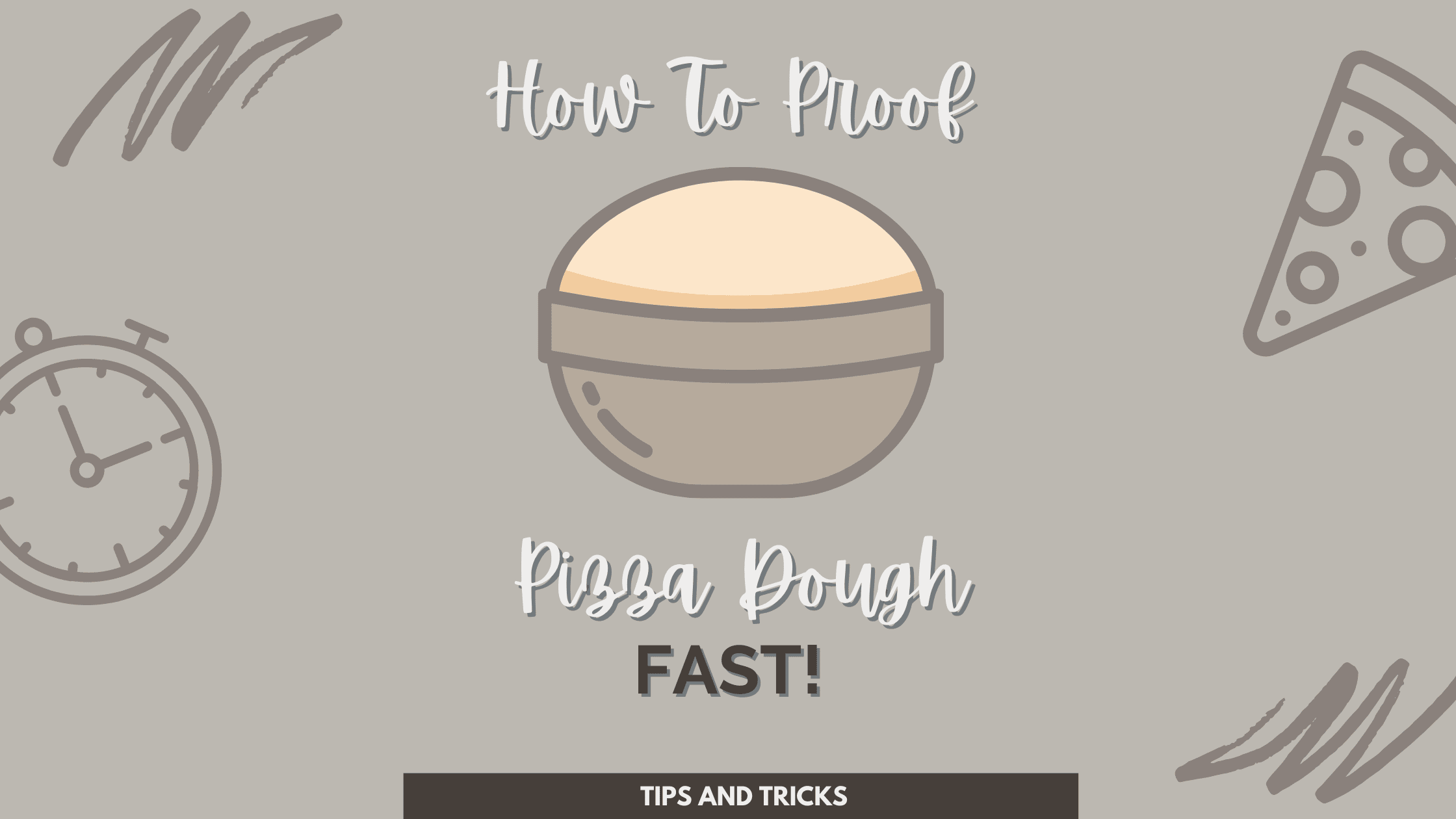
How to Proof Pizza Dough Fast
the PROs
How to Proof Pizza Dough Fast Behind every tasty pizza dough is a secret. Secrets behind its fantastic flavor and …
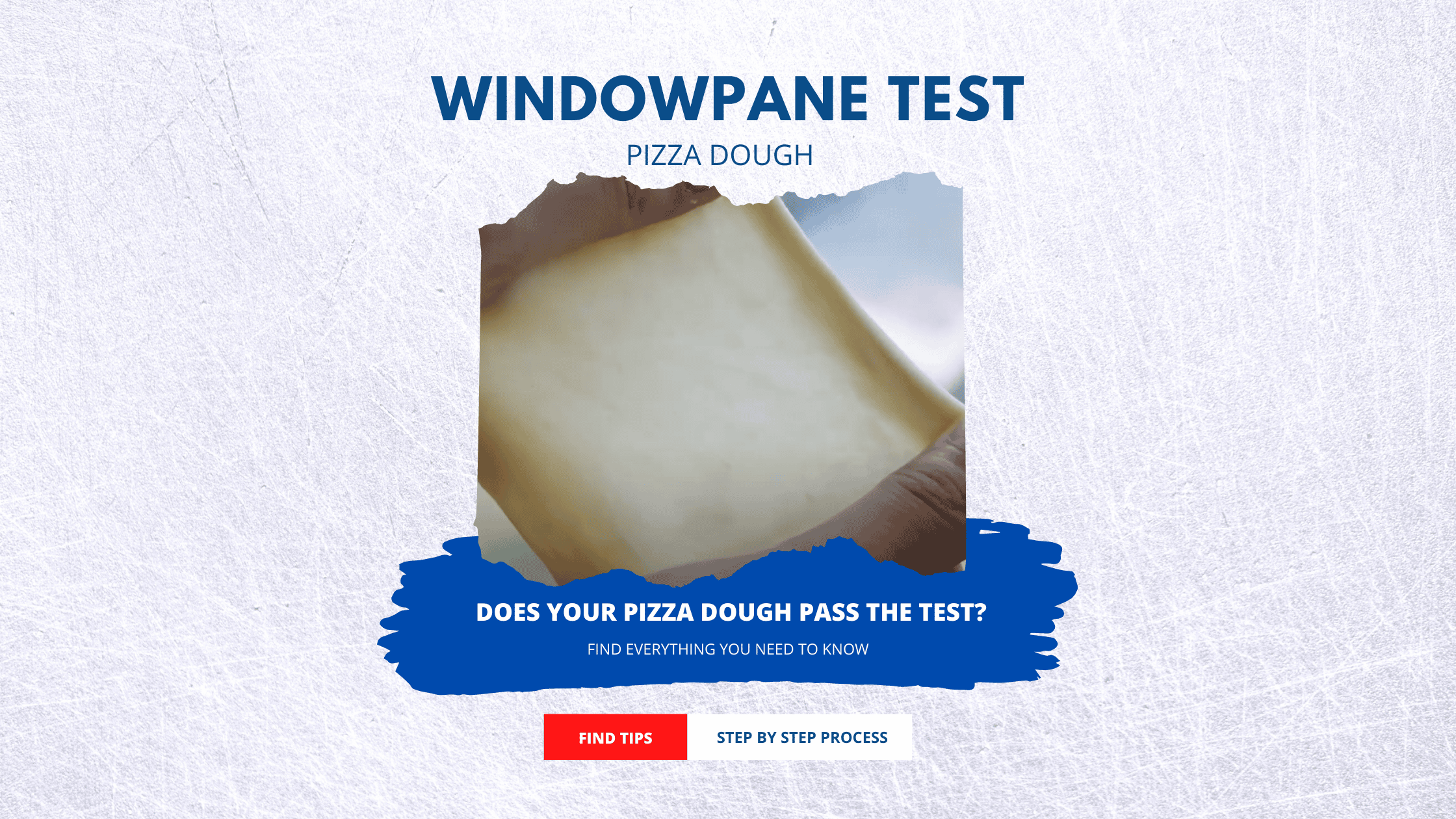
Windowpane Test: (Tips, How-to, and Everything You Need to Know)
the PROs
Pizza Dough Windowpane Test Kneading the dough is probably one of the most complex parts of baking a pizza. You …

Can You Freeze Pizza Dough? (Everything You Need to Know)
the PROs
How to Freeze Pizza Dough Are you wondering how to freeze pizza dough? Most of us know that putting things …
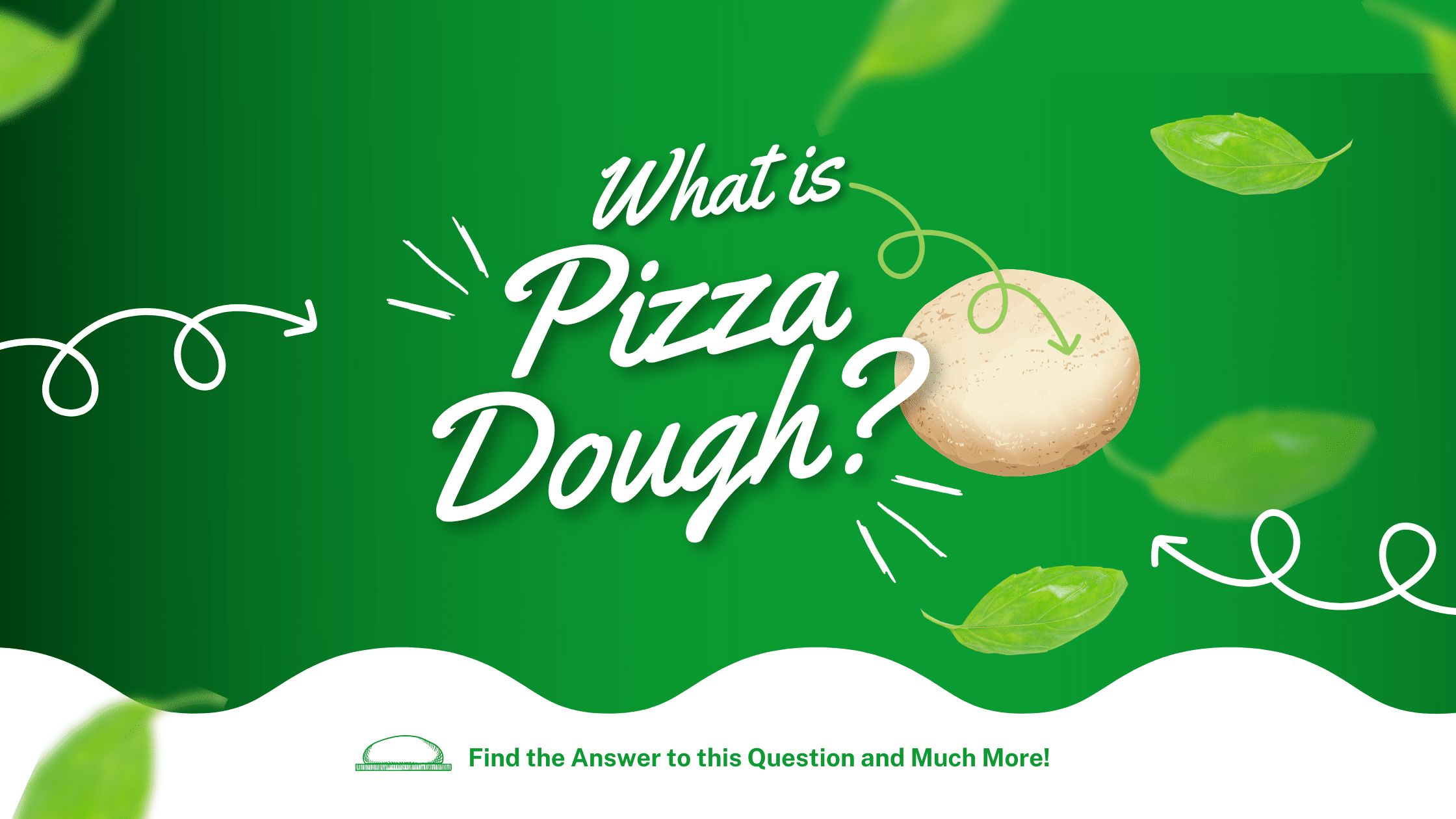
What is Pizza Dough? Here’s What You Need to Know and How to Make It
the PROs
Pretty much everyone likes pizza. But when you first start making pizza at home, you can feel a little overwhelmed. …
Enjoy!
Not a PRO? Not a Problem!
Take a pizza class to bring your pizza skills to the next level,
so you can be a PRO!
Related Posts

Costco Pizza Delivery: Find How You Can Get It Now!
the PROs
People go to Costco’s food court for many different reasons, but the cheesy slice of pizza they serve is among …

Pizza for Beginners: Don’t Buy Pizza, Make It! Here’s How to Get Started!
the PROs
You have this idea that you want to make pizza at home as opposed to ordering it, but where do you start? Don’t worry! Here you will find answers and directions to all your questions.

Pizza Toppings Under Cheese or Over Cheese? [Why the Order Matters]
the PROs
Is Pizza Cheese on Top or Bottom? Hey pizza lovers, are you wondering if you should layer pizza toppings under …
Newsletter
Subscribe to our Recipe of the Week newsletter and receive our partners’ latest recipes, tips, and discount offers.
Keep in Touch!

